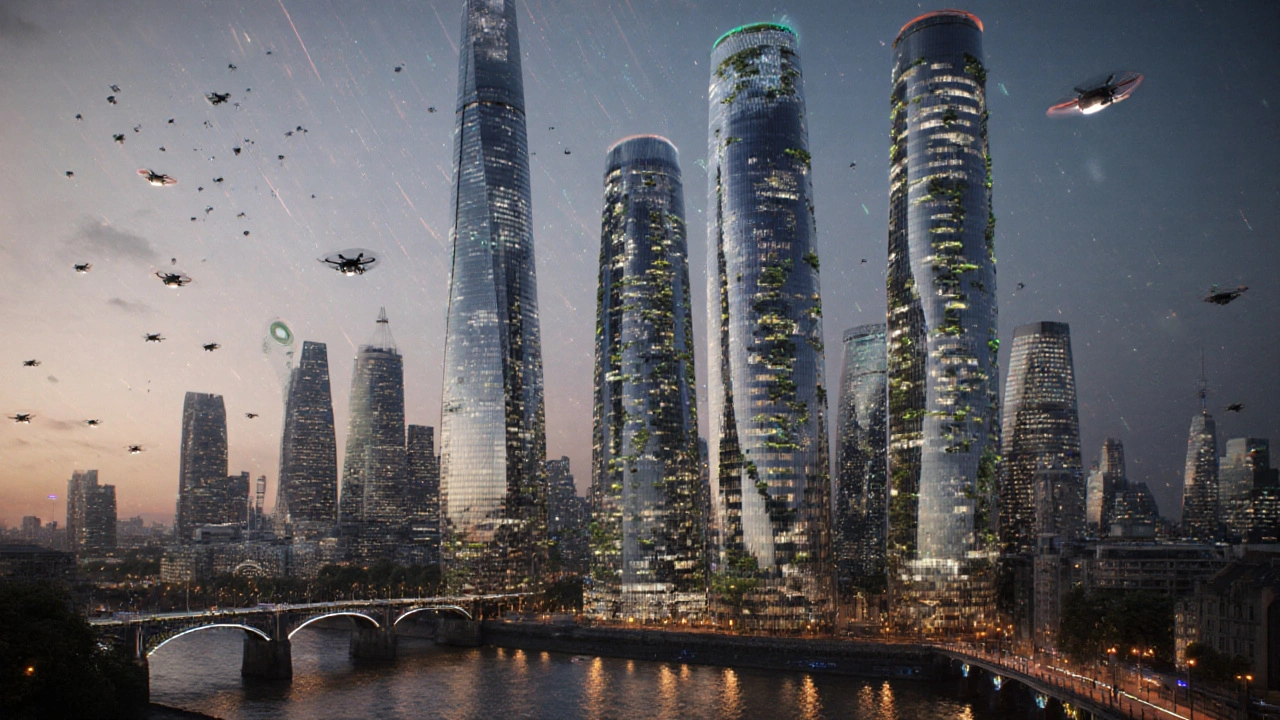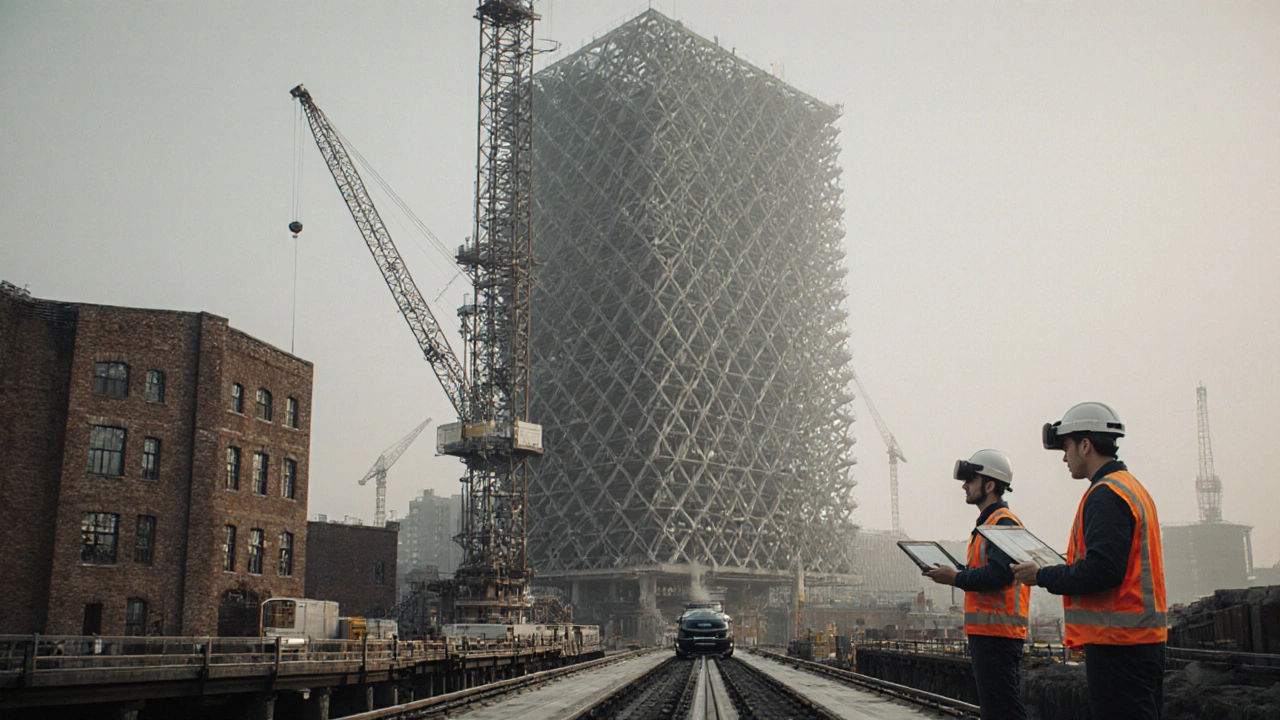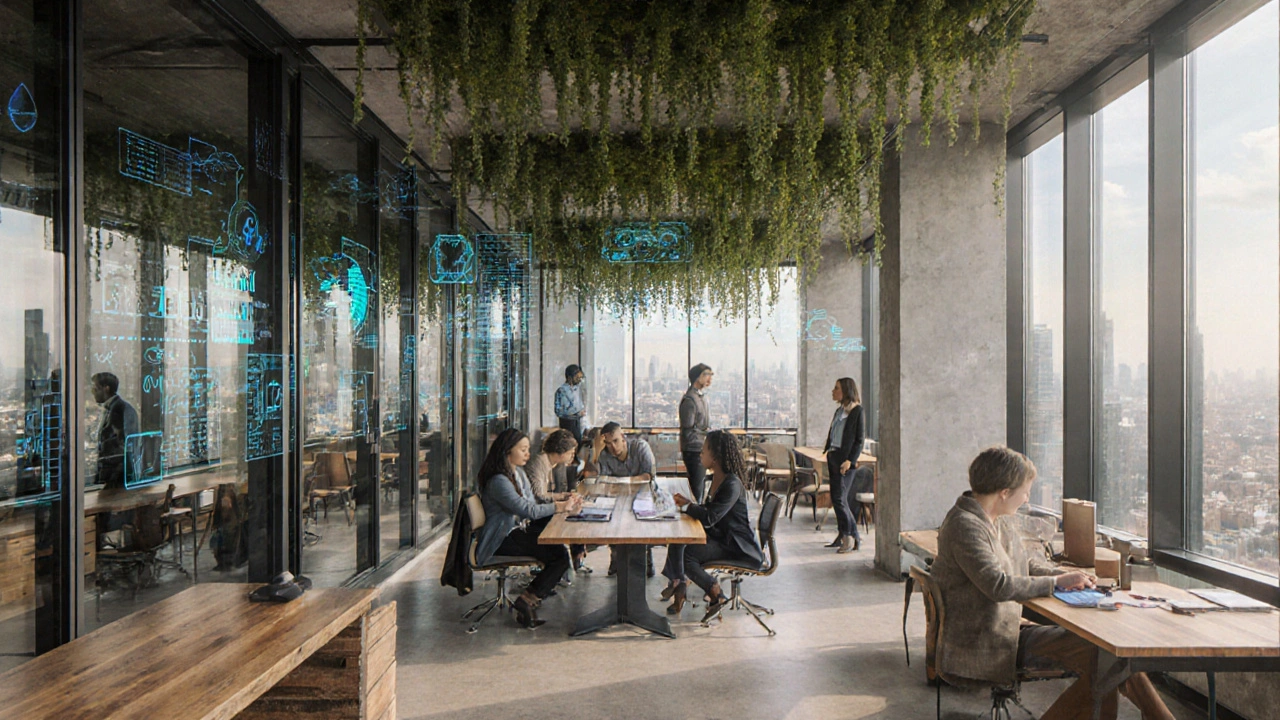High-Tech Architecture: Shaping the Future of Sustainable Design
 Sep, 29 2025
Sep, 29 2025
High-Tech Architecture Savings Estimator
Enter your building details below to estimate potential energy savings and carbon footprint reduction using high-tech architecture solutions.
Climate change is forcing architects to rethink how buildings are conceived, constructed, and operated. Traditional green building tactics-better insulation, solar panels, water recycling-are still vital, but they alone won’t meet the carbon‑neutral goals set for 2030 and beyond. Enter high-tech architecture: a blend of digital innovation, advanced materials, and performance‑driven design that promises to make sustainability an inherent part of every structure.
What Is High-Tech Architecture?
High-Tech Architecture is a design philosophy that integrates cutting‑edge technology directly into the building’s fabric, turning systems into aesthetic and functional assets. It emerged in the late 1960s with projects like the Centre Pompidou in Paris, where exposed services became a visual statement. Today, however, the focus has shifted from industrial showcase to performance optimization-think façades that breathe, structures that self‑heal, and data dashboards that steer energy use in real time.
Core Technologies Driving Sustainable High-Tech Buildings
- Internet of Things (IoT) Building Systems embed sensors, actuators, and networked controllers throughout the envelope, enabling granular monitoring of temperature, occupancy, and air quality.
- Smart Materials such as electrochromic glass that tints on demand, phase‑change insulation that stores thermal energy, and self‑healing concrete that seals cracks automatically.
- Parametric Design uses algorithms to generate forms that respond to environmental data, optimizing daylight, wind flow, and structural efficiency.
- 3D Printing for Construction creates precise, waste‑free components on‑site, reducing material transport and allowing complex geometries that improve structural performance.
- Renewable Energy Integration combines photovoltaic skins, building‑integrated wind turbines, and geothermal loops into the structural layout, turning the building itself into a power generator.
These technologies are not isolated; they interlock to form a feedback loop where data informs material response, and material performance feeds back into design decisions.
Real‑World Examples That Show What’s Possible
Several projects illustrate the marriage of high‑tech and sustainability:
- Edge Olympic in London uses a facade of 60,000 individually controlled glass panels that adjust tint based on sunlight, cutting cooling loads by 30%.
- Rocky Mountain Institute’s Net Zero Home integrates IoT sensors to balance heat pump output with solar generation, achieving net‑zero energy in just 12 months of operation.
- Amsterdam’s 3D‑Printed Pavilion employed a bio‑based polymer printed on‑site, using 70% less material than a conventional steel frame while delivering superior insulation.
Each case demonstrates a different slice of the high‑tech toolbox, yet all share a common outcome: measurable reductions in carbon emissions, operating costs, and maintenance cycles.

Checklist: How to Embed High‑Tech Sustainability Into Your Next Project
- Start with a data audit. Map energy use, daylight patterns, and occupancy trends before selecting technologies.
- Choose a smart envelope. Opt for electrochromic glazing or dynamic shading systems that react to real‑time solar intensity.
- Integrate IoT sensors at the design stage. Position temperature, CO₂, and humidity sensors in zones where human comfort is critical.
- Leverage parametric tools. Use Grasshopper, Dynamo, or similar platforms to generate performance‑driven geometry.
- Plan for renewable generation. Align roof pitch and orientation with PV panel layout; consider building‑integrated wind or geothermal where feasible.
- Test with digital twins. Simulate the building’s behavior over a year using BIM‑linked analytics before construction begins.
- Specify low‑embodied‑carbon materials. Prioritize recycled steel, hemp‑based insulation, or bio‑concrete that sequester CO₂.
- Design for adaptability. Install modular service shafts and flexible floor plates to accommodate future tech upgrades.
Following this list helps ensure that high‑tech elements are not afterthoughts but core drivers of sustainability.
Comparing Three Key High‑Tech Solutions
| Solution | Primary Function | Typical Sustainability Impact | Estimated Cost (USD/m²) | Maturity Level |
|---|---|---|---|---|
| IoT‑Enabled Building Management | Real‑time monitoring & control of HVAC, lighting, and occupancy | 15‑25% reduction in energy use | 80‑120 | High |
| Electrochromic Façade | Dynamic shading and daylight regulation | 20‑35% reduction in cooling loads | 150‑250 | Medium‑High |
| 3D‑Printed Structural Panels | On‑site fabrication of load‑bearing components | 30‑45% reduction in embodied carbon | 200‑350 | Medium |
The table shows that while IoT systems are the most cost‑effective entry point, electrochromic façades deliver higher operational savings, and 3D‑printed panels excel at cutting embodied carbon. The right mix depends on project budget, climate, and performance goals.
Challenges and How to Overcome Them
High‑tech sustainability isn’t a magic bullet. Common hurdles include:
- Data overload. Too many sensors can create analysis paralysis. Mitigate by prioritizing key performance indicators (KPIs) and using AI‑driven dashboards to surface insights.
- Skill gaps. Designers may lack coding or data science expertise. Partner with specialist firms or upskill teams through BIM‑integrated parametric workshops.
- Regulatory uncertainty. Building codes often lag behind technology. Engage with local authorities early, presenting performance data to justify innovative solutions.
- Lifecycle costs. Advanced materials can have higher upfront costs but lower maintenance. Conduct a whole‑life cost analysis to demonstrate long‑term ROI.
Addressing these issues early keeps projects on track and boosts stakeholder confidence.
Looking Ahead: What the Next Decade Holds
Future trends point toward deeper integration of biology and tech. Imagine bio‑responsive skins that grow algae for on‑site bio‑fuel, or nanomaterial coatings that capture CO₂ and release it for indoor plants. AI will not only monitor but also predict occupant behavior, pre‑emptively adjusting systems for comfort and efficiency. As digital twins become ubiquitous, architects will iterate designs in a virtual world that mirrors real‑time performance, closing the loop between intention and outcome.
In short, high‑tech architecture is poised to become the backbone of sustainable cities, turning every building into a living, learning system that actively combats climate change.

Frequently Asked Questions
What distinguishes high‑tech architecture from traditional green building?
Traditional green building focuses on passive measures-insulation, orientation, renewable energy-whereas high‑tech architecture embeds sensors, smart materials, and adaptive systems directly into the building’s structure, allowing real‑time performance optimization.
Are the costs of high‑tech solutions prohibitive for mid‑scale projects?
Initial costs can be higher, especially for smart façades or 3D‑printed components. However, when you factor in energy savings, reduced maintenance, and longer building lifespans, the total cost of ownership often becomes comparable or lower than conventional builds.
How do I start integrating IoT sensors into a design?
Begin with a performance audit to identify critical zones. Choose open‑protocol sensors (e.g., Zigbee, LoRa) that can plug into a central BMS (Building Management System). Collaborate with a technology integrator early to ensure wiring and data architecture are built into the BIM model.
Can high‑tech architecture be applied to heritage buildings?
Yes. Non‑intrusive retrofits-like external smart shading devices or discreet IoT climate monitors-can upgrade performance without altering historic fabric. The key is to respect preservation guidelines while adding reversible technology.
What role does AI play in high‑tech sustainable design?
AI processes the massive data streams from sensors, predicts occupancy patterns, and automatically tweaks HVAC, lighting, and shading settings to maximize comfort while minimizing energy use. It can also flag maintenance issues before they become costly failures.